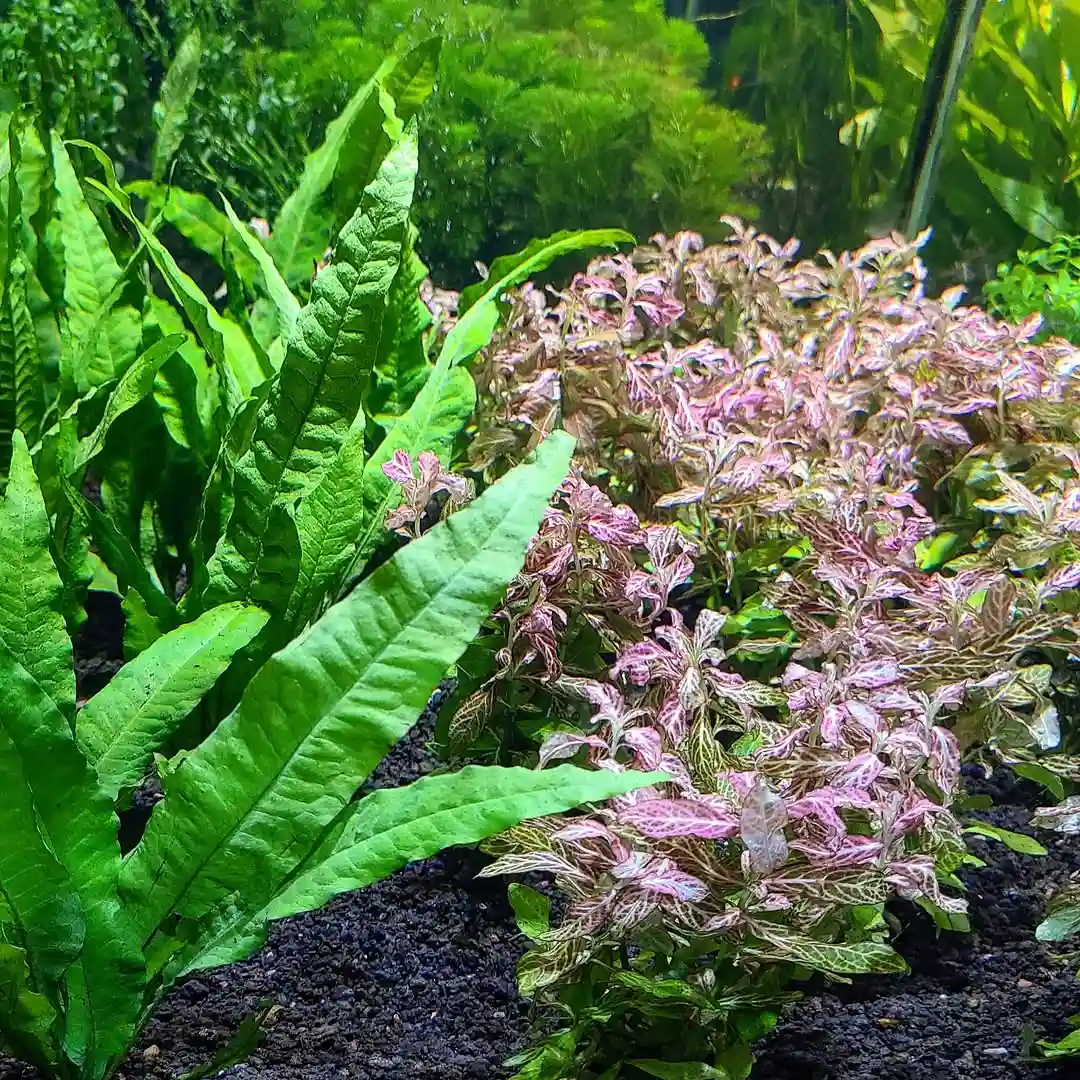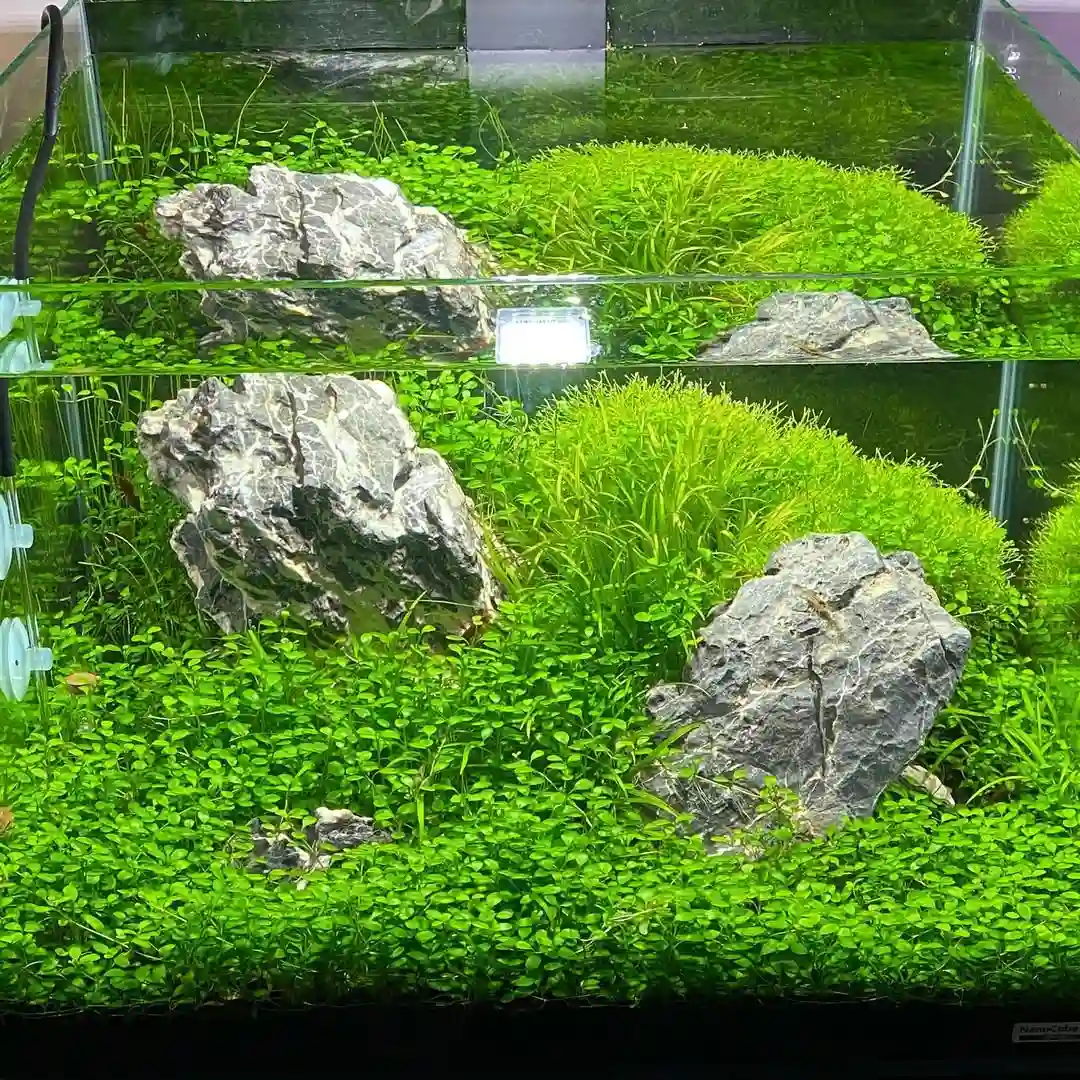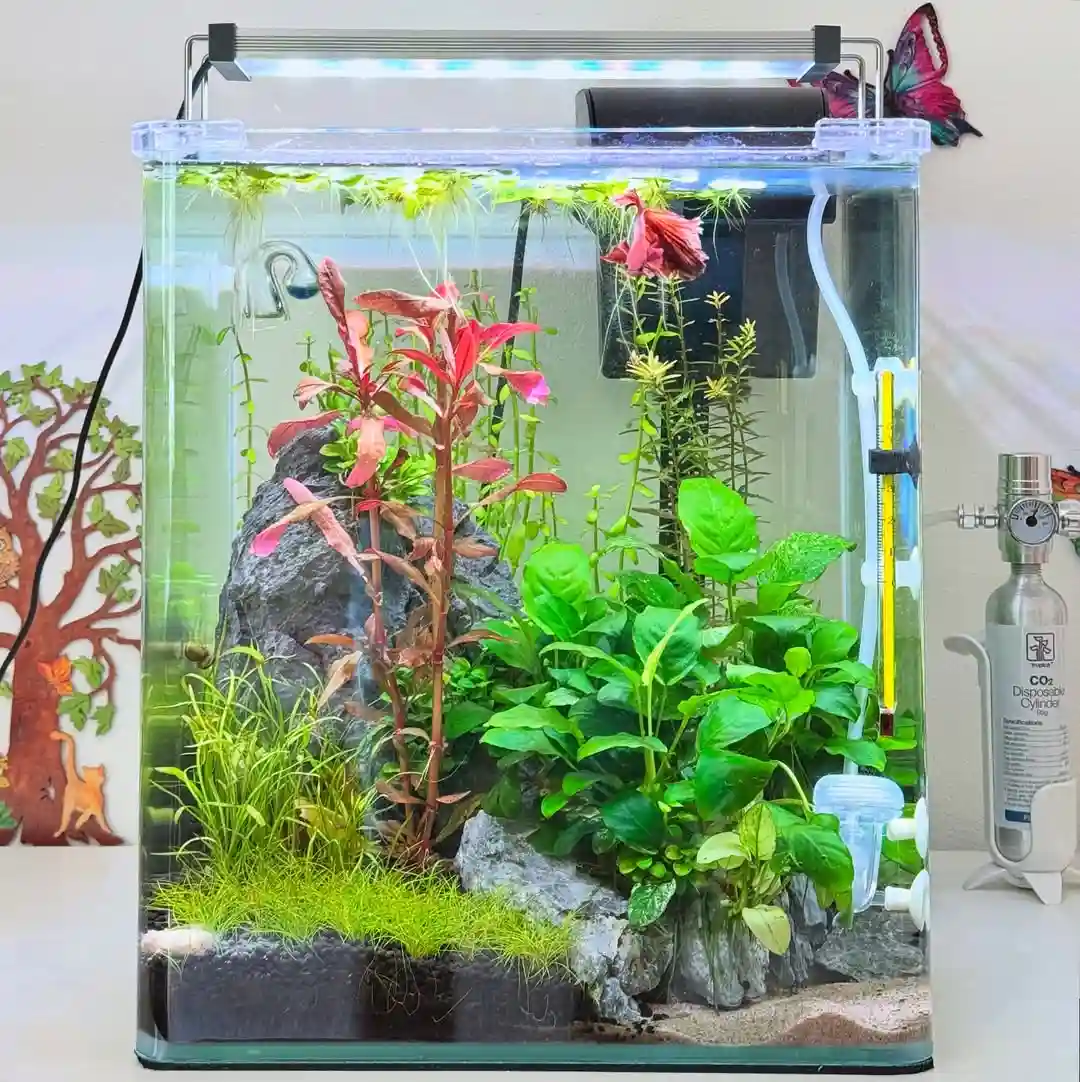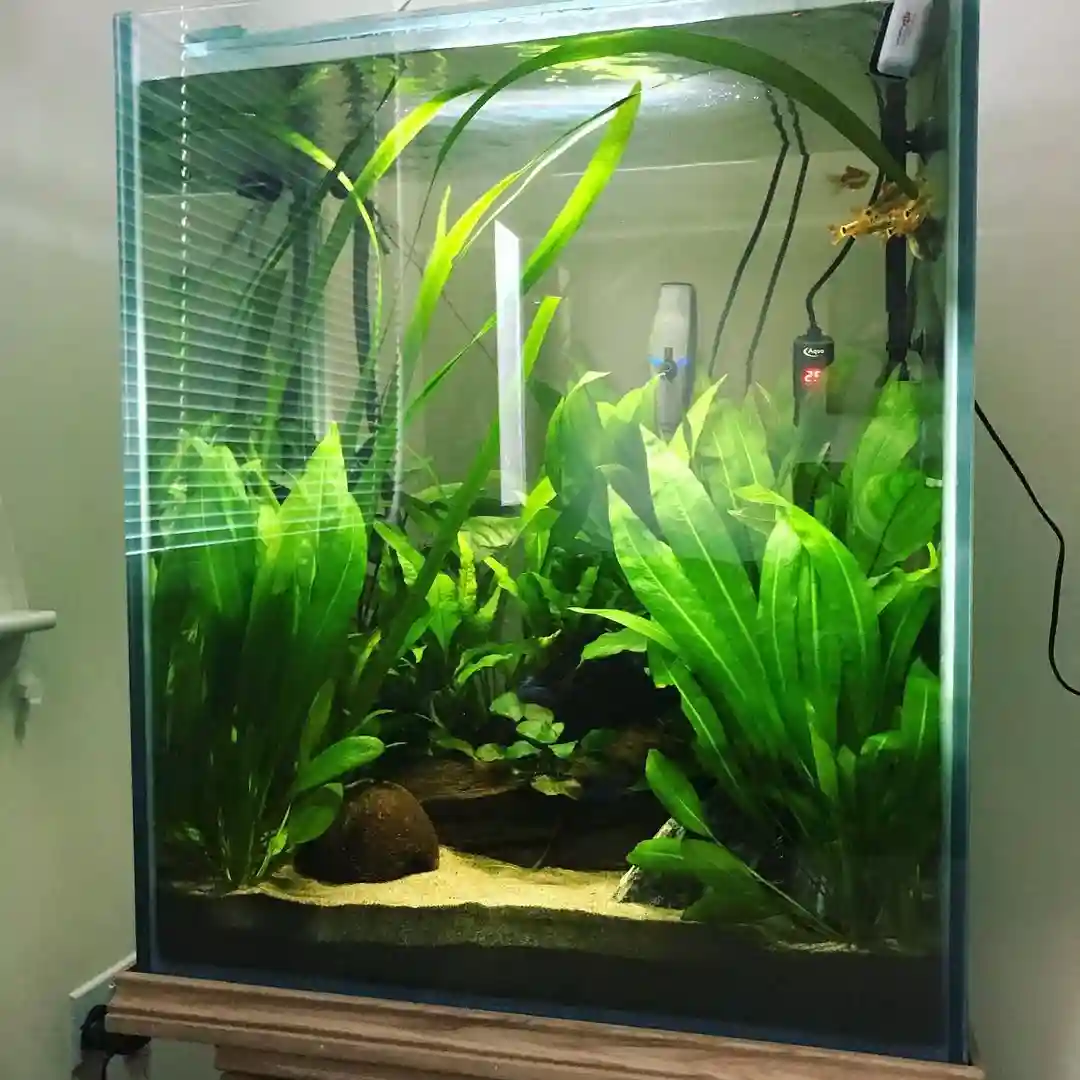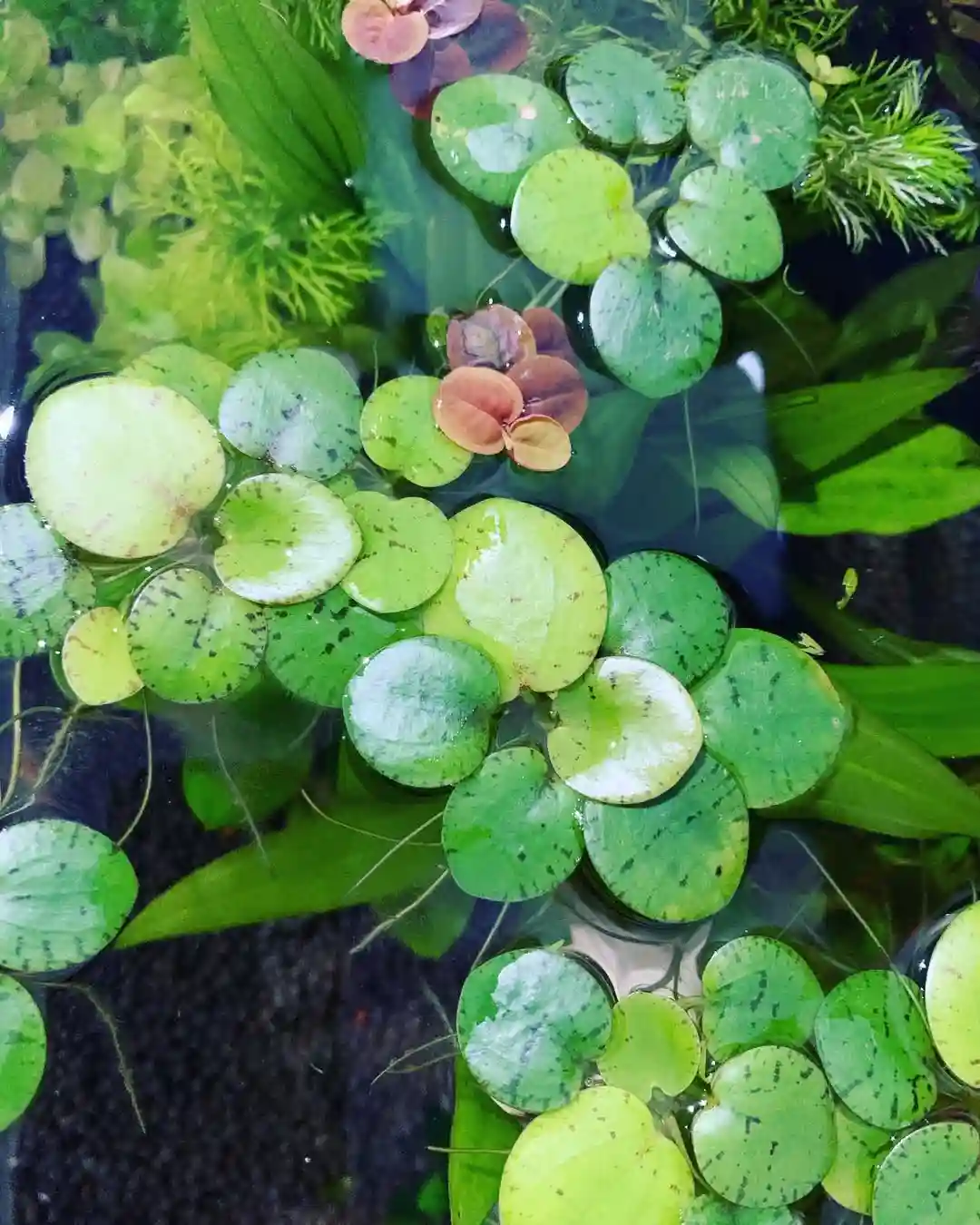Water Wisteria Care Guide: Growth, Tank Setup, and Propagation Tips
Water Wisteria (Hygrophila difformis) is one of those aquarium plants that instantly transforms an ordinary tank into something lush and alive. Its feathery green leaves sway beautifully in the current, offering shelter for fish and a natural way to clean the water.
For new aquarists, this plant feels almost magical it grows fast, adapts easily, and doesn’t demand much care. If you’ve been looking for a low-maintenance plant that still looks impressive, Water Wisteria deserves a place in your tank.

What Is Water Wisteria?
Native to India and parts of Southeast Asia, Water Wisteria is a freshwater stem plant loved for its unique lace-like leaves and ability to grow both underwater and above the surface. In the wild, it spreads across shallow waters and rice paddies, where it enjoys constant sunlight and nutrient-rich soil.
In aquariums, it behaves similarly—thriving under good lighting and stable conditions. What makes it special is how adaptable it is. It can be rooted in the substrate or left floating, and it changes its leaf shape depending on how it’s grown.
Ideal Tank Conditions
Tank Size and Placement
While Water Wisteria can grow in small aquariums, a 10–20 gallon tank gives it the space it needs to spread and show off its natural beauty. Many aquarists like to plant it in the mid or background area, where its tall stems can fill the space without overwhelming smaller plants.
Give it some room between other plants so light and water can reach every leaf. A little spacing also makes trimming and cleaning much easier later on.
Read also: Java Moss Care: Floating, Growth, Trimming & Aquascaping Tips
Lighting and Water Conditions
Light plays a big role in how this plant looks. Under moderate to high lighting (8–10 hours a day), the leaves become brighter and more defined. With less light, growth slows and leaves may turn dull or thinner. If you’re running your tank lights on a timer, stick to a consistent daily cycle—it keeps the plant healthy and also prevents algae from taking over.
Water Wisteria prefers stable water parameters:
- Temperature: 70–82°F (21–28°C)
- pH: 6.5–7.5
- Hardness: 2–8 dKH
You don’t need CO₂ injection, though adding it can speed up growth and make the plant fuller. The real key is keeping your water clean and consistent—sudden changes are what usually cause leaf melting or yellowing.
Substrate and Fertilization
A nutrient-rich substrate, such as planted aquarium soil or fine gravel with root tabs, helps Wisteria anchor itself and draw nutrients through its roots. But because it also absorbs nutrients directly from the water, a good liquid fertilizer once a week keeps it at its best.
If you start to see pale leaves or slow growth, it’s a sign the plant could use a little boost of iron or micronutrients.
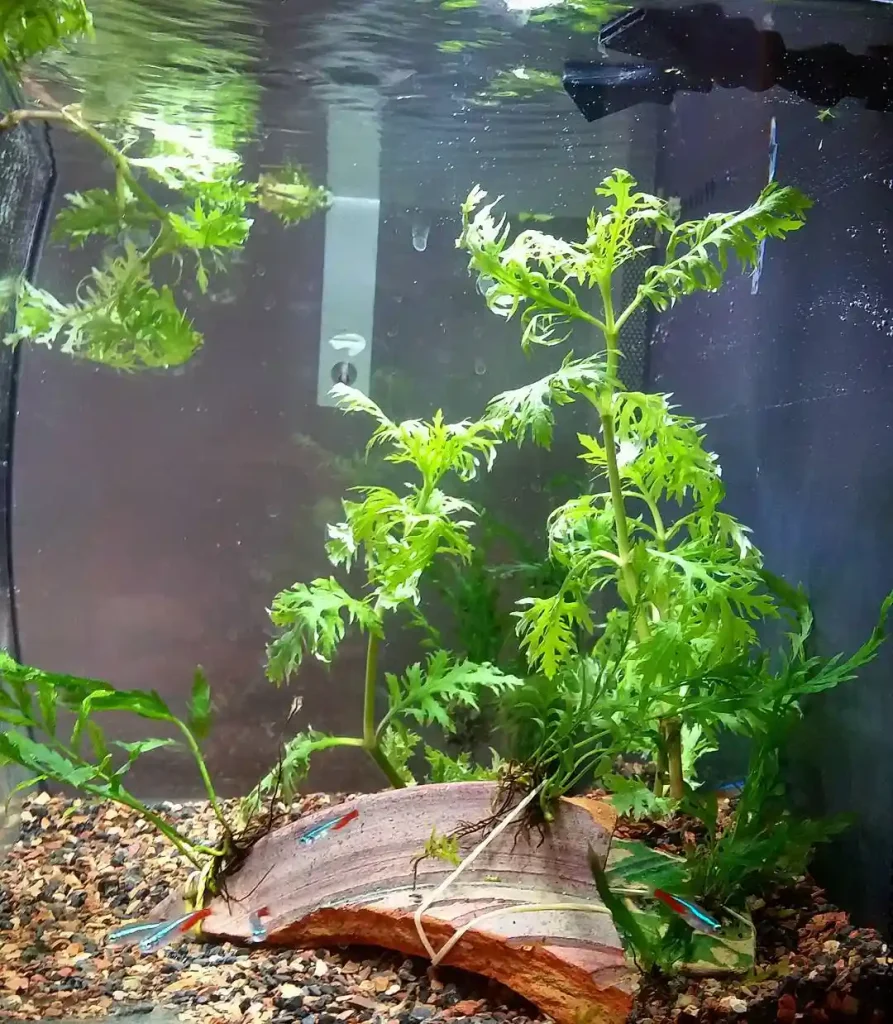
Planting and Growing Water Wisteria
When you first bring Water Wisteria home, trim the lower ends of the stems slightly before planting. Push each stem gently into the substrate about an inch deep, leaving some space between them so they don’t crowd each other out. Within a week or two, you’ll notice new roots forming and leaves stretching upward.
One of the joys of keeping this plant is how quickly it grows. In healthy conditions, it can reach up to 20 inches tall. Some aquarists even let it float on the surface, where it develops a softer, bushier look and provides shade for fish below.
However, fast growth also means regular trimming. Cutting back taller stems encourages side shoots and thicker foliage, which makes your tank look fuller and more balanced.
If you ever notice yellowing leaves, melting, or algae buildup, check your lighting and nutrient balance. Most of these problems are temporary and easy to fix with small adjustments.
Propagation: Making More Wisteria
Propagating Water Wisteria couldn’t be simpler. All you need to do is snip off a healthy stem, ideally 4–6 inches long, and replant it in the substrate. It will grow roots within days and start forming new leaves.
You can also let trimmed stems float at the top of the tank they’ll naturally develop roots and can later be planted once established. With this method, you can quickly fill an entire background wall of your aquarium with just a few original stems.
Read also: Amazon Sword Care: Planting, Lighting, Growth & Tank Setup Tips
Benefits of Adding Water Wisteria to Your Aquarium
Beyond its good looks, Water Wisteria serves several practical purposes. It helps absorb nitrates and other waste, keeping water cleaner for your fish. The dense leaves provide excellent hiding spots for fry and shrimp, reducing stress in community tanks.
Because it grows so fast, it also competes with algae for nutrients, making it a natural defense against green film or hair algae. In a balanced aquarium, this plant contributes to a stable and healthy ecosystem while giving your tank a vibrant, natural feel.
Best Tank Mates
Water Wisteria pairs well with peaceful species. Guppies, mollies, neon tetras, rasboras, and shrimp all thrive in tanks with this plant. They enjoy swimming through its leaves and using it for shelter.
What you’ll want to avoid are large or plant-eating fish such as goldfish, oscars, or certain cichlids. These species may nibble the leaves or uproot stems, undoing your careful aquascaping work.
Water Wisteria vs Water Sprite
It’s easy to confuse Water Wisteria with Water Sprite, as both have fine, green leaves and grow quickly. But they differ in structure and texture. Water Sprite leaves are more delicate and fern-like, while Wisteria’s are thicker and patterned like lace.
Water Sprite tends to grow more as a floating plant, whereas Wisteria looks best when rooted. If you want a sturdy, fast-growing background plant, Water Wisteria is the better choice.
Maintenance and Long-Term Care
As with all aquarium plants, regular maintenance is key. Trim overgrown stems every couple of weeks to keep the plant from blocking light to others below. During water changes, gently vacuum around its base to remove debris without disturbing the roots.
If growth slows or the color fades, it usually means the plant needs more nutrients. A balanced routine of weekly fertilization and steady lighting brings it back to life quickly. Every few months, replace older stems with new cuttings to refresh the plant bed and maintain that vibrant green look.
Frequently Asked Questions
Can Water Wisteria grow without substrate?
Yes, it can. It’ll grow floating or attached to decorations, though it tends to look denser and healthier when rooted.
How tall does it get?
In good conditions, stems can reach up to 20 inches tall, often touching the surface in taller tanks.
Why are the leaves turning brown or yellow?
That’s usually a sign of nutrient deficiency or poor lighting. Add a fertilizer or adjust your light schedule to restore color.
Can it survive in low light?
It will survive, but growth will be slow and less full. For best results, aim for moderate light levels.
Do I need to add CO₂?
Not at all, but CO₂ supplementation can boost growth and make the plant even more vibrant.
Final Thoughts
Water Wisteria is the perfect plant for anyone who wants a green, living touch in their aquarium without the stress of high maintenance. It’s forgiving, fast-growing, and stunning when healthy. Whether you plant it in the background for depth or let it float freely, it adds movement and life to your setup.
Start with a few stems, give it proper light and nutrients, and watch as it turns your aquarium into a lush, underwater garden.

